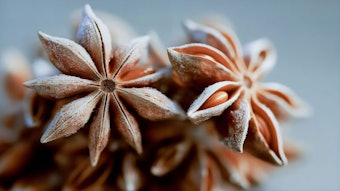One of the (many) things that highly confused me when initially learning how to make flavors was the fact that some misguided— or perhaps quietly humorous–soul had managed to call hexanoic acid caproic acid. Also, octanoic acid was mischievously called caprylic acid, and decanoic acid, even more mischievously, capric acid. The unbranched saturated aliphatic acids in these materials actually do follow a predictable odor/ structure relationship but this extreme similarity of nomenclature just seemed to be a compounding accident waiting to happen.
Octanoic acid (FEMA# 2799, CAS 124-07-2) sits in the middle of this series of aliphatic acids, equidistant from the essentially cheesy aroma character of butyric acid and the distinctly waxy taste character of dodecanoic acid. The distinctly cheesy aroma also has a powerful note of goat—which is to say nothing against goats. They make excellent cheese and are seemingly bright animals. In fact, during recent travels to India, I made friends with two goats who lived in the jungle near my room. However, on the last trip the jungle had sadly been cleared away and replaced with a pineapple farm. The goats were gone and I am afraid I entertain dark suspicions about their fate. Octanoic acid would be a superb ingredient in goat and goats’ milk flavors, the most obvious usefulness of this ingredient is in dairy flavors of all descriptions.
Octanoic acid has a pungent odor contribution but balances that effect with a significant taste contribution. This ability to marry taste and smell carries over into a plethora of non-dairy flavors, described here. The dose rates given throughout this article are for use in flavors that are intended to be dosed at 0.05%, in readyto- drink beverages or simple bouillon.










